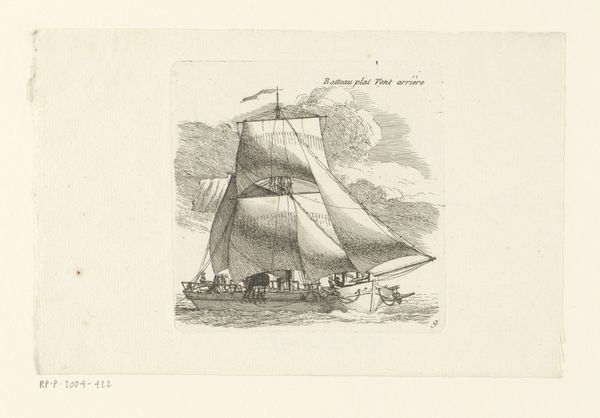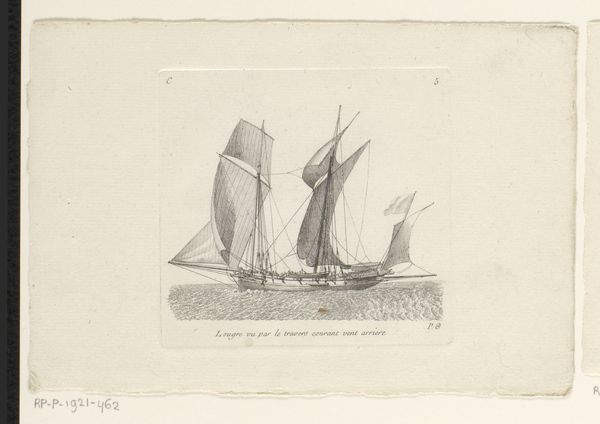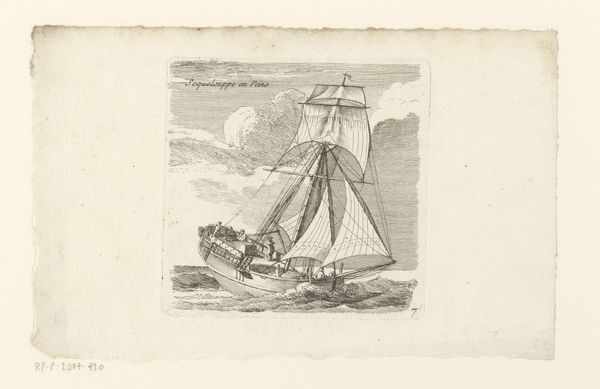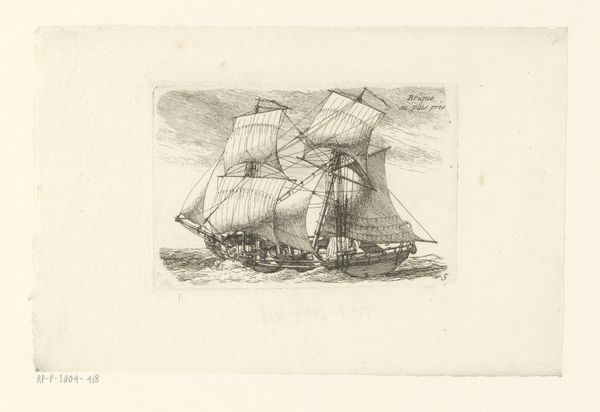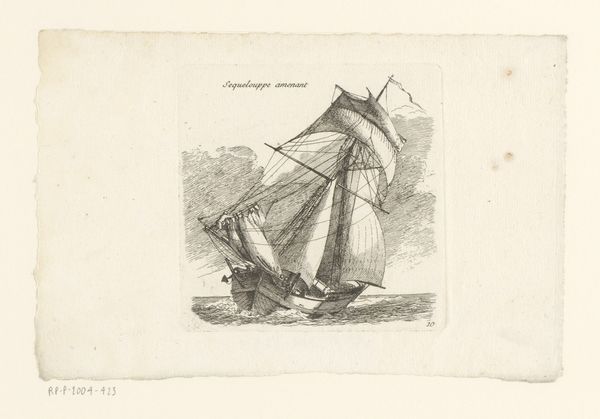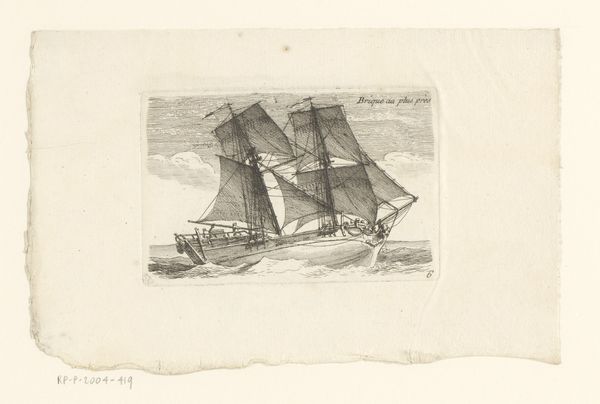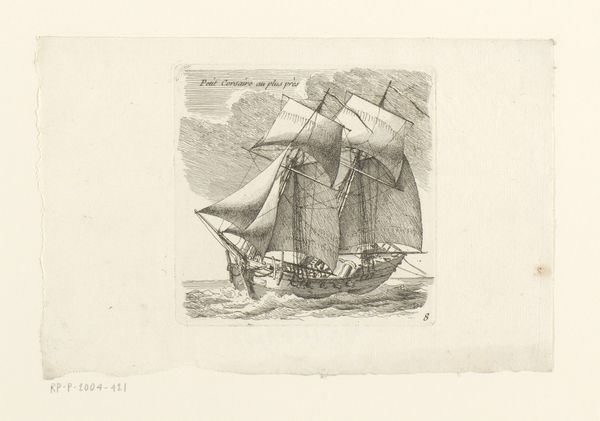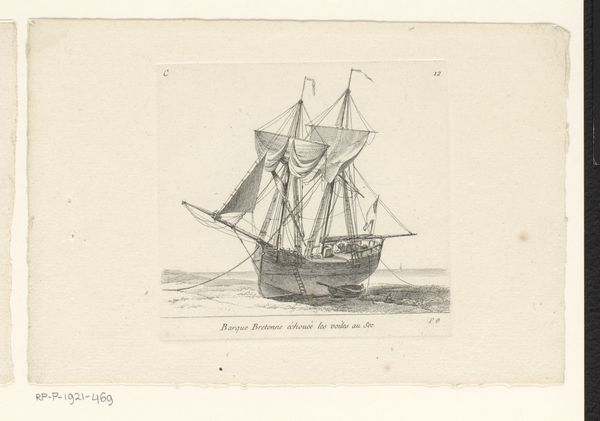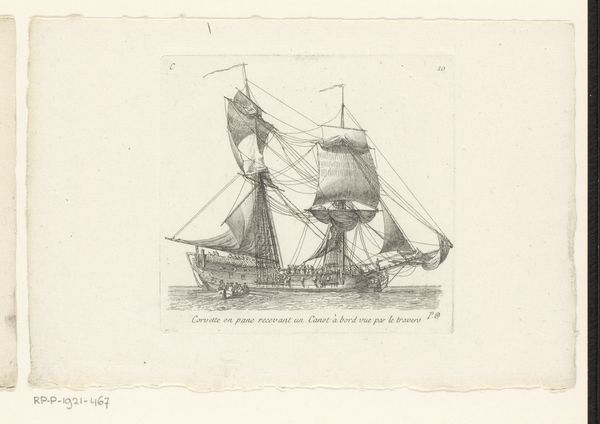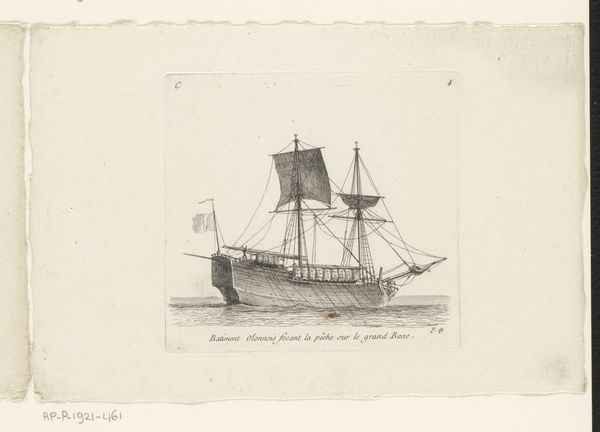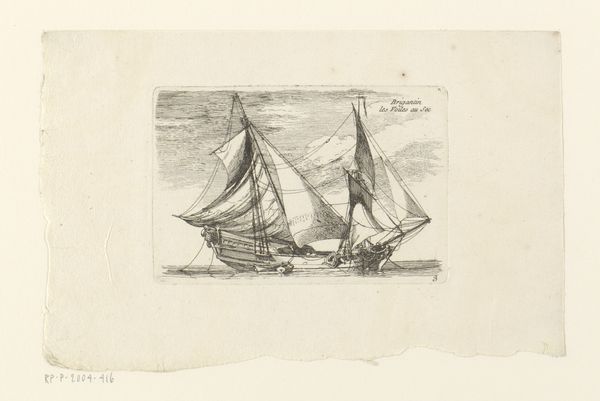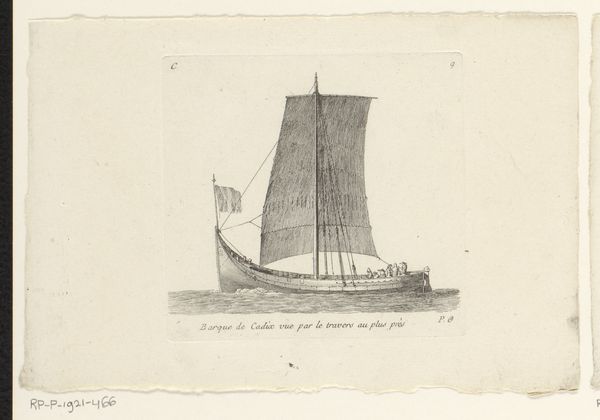
Dimensions: height 79 mm, width 120 mm
Copyright: Rijks Museum: Open Domain
Curator: Ah, this print exudes such tranquility, don’t you think? It’s entitled “Ship at Sea with Wind Aft” by Nicolas Marie Ozanne, made sometime between 1738 and 1811. The wind seems fair, the ship glides… a beautiful, quiet journey. Editor: My first impression is different; it feels a bit austere, doesn’t it? The crisp lines of the engraving almost feel technical, more like a ship blueprint than something romantic or poetic. It's about the structure. Curator: That’s a very interesting perspective. I can see what you mean by ‘blueprint.’ But consider what an engraving like this meant then; prints were democratic tools. This could be both beautiful *and* practical! The detail is so finely rendered—look at the way he captures the curve of the sails and the churning water. Editor: Exactly, the print medium made depictions of maritime power accessible. Consider the engraver as a skilled laborer meticulously recreating a ship. How many sailors might have owned a similar print? What conditions and class status defined their experience with shipbuilding? Curator: It does evoke a sense of nautical knowledge and craftmanship. Ozanne obviously knew his ships and his seas. Do you think he had first hand experience, sailing the waters or even helping in the shipbuilding perhaps? One has to feel the spray of the ocean in order to capture a moment like this. Editor: Absolutely! I'd bet he either witnessed it himself or was around artisans who mastered sailing. That tactile element translates across the labor of producing a print like this – the copper plate, the inking process, even the paper choice all carry weight in representing not just the image, but how people interacted with their world. Curator: And, after all, that interaction—between people, craft, and nature—is what gives this piece its quiet strength. There is an artistry of labor too, don’t you agree? It's more than just wind, sails and water; it is what it took to sail and produce the vessel that brings us home safe. Editor: Precisely. We can navigate those currents if we allow ourselves to feel the echoes of skilled labor involved and consider it art history. Let us not forget all the hands and lives that come to produce what we come to view and appreciate.
Comments
No comments
Be the first to comment and join the conversation on the ultimate creative platform.
